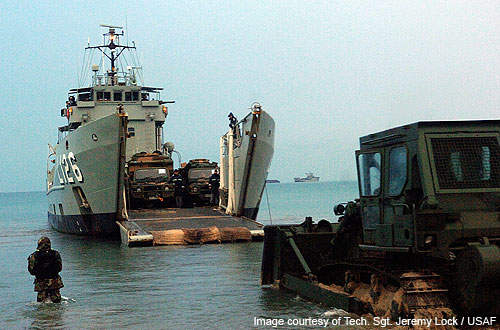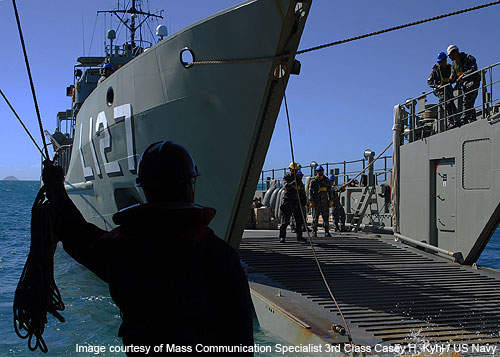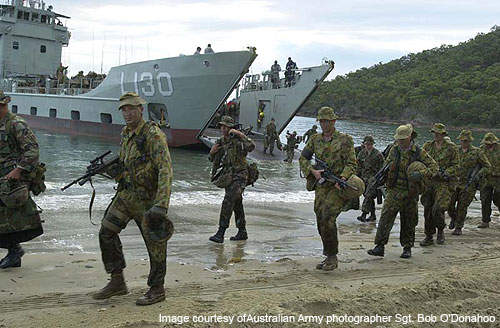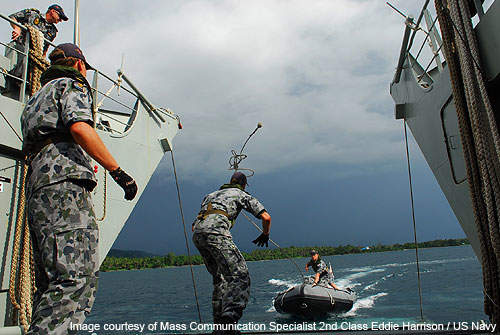The Balikpapan Class LCH (landing craft, heavy) were originally ordered by the Australian Army to replace their four landing ships medium. Eight craft were constructed by Walker between 1971 and 1974. All the ships in the class were transferred to the Royal Australian Navy (RAN) during their construction.
All ships in the class are named after places in the Pacific region where the Australian Army was engaged with the German troops with the support of the RAN in WWII. The RAN currently operates six vessels of this class. The remaining two ships were transferred to the Papua New Guinea Defence Force (PNGDF) in 1975. Two ships are based at Cairns and four at Darwin.
Balikpapan Class heavy landing craft vessels
The keel for the first ship, HMAS Balikpapan (L126), was laid down in May 1971. It was launched in August 1971 and commissioned in December 1971. This prototype LCH was originally operated by Army Water Transport until transferred to the RAN in September 1974.
HMAS Brunei (L127) was laid in July 1971, launched in October 1971 and commissioned in January 1973. HMAS Labuan (L128) was laid in October 1971, launched in December 1971 and commissioned in March 1973. HMAS Tarakan (L129) was laid in December 1971, launched in March 1972 and commissioned in June 1973. HMAS Wewak (L130) was laid in March 1971, launched in May 1972 and commissioned in August 1973.
HMAS Salamaua (L131) was launched in July 1972 and commissioned in October 1973. HMAS Buna (L132) was launched in September 1972 and commissioned into the RAN in December 1973. Both ships were decommissioned in November 1974 and transferred to PNGDF. HMAS Betano (L133) was laid down in September 1972, launched in December 1972 and commissioned in February 1974.
Design and features
The Balikpapan is an all-welded twin-screw construction. The ship is designed to trans-ship cargo and supplies from ships located offshore to water terminals or the shore. The Balikpapan can make oceanic voyages in moderate conditions.
The Balikpapan Class LCH has an overall length of 44.75m and beam of 10m. Displacement of the ship is 323t. The vessel can complement a crew of 13 including two officers and 11 sailors. A typical load of 175t provides the LCH with a range of 1,300nmi.
Operations
The RAN Balikpapan Class LCH played a vital role in peacekeeping and resupply operations in Bougainville and East Timor. HMAS Tarakan was primarily engaged in Army support.
In July 1985, the Navy Office decided to lay up three LCHs in Operational Reserve. HMAS Tarakan was decommissioned from the RAN after 12 years of service in November 1988 to support various LCH missions from Cairns.
Armament
The Balikpapan Class LCH is armed with two 0.50in machine guns. Since the ships are lightly armed, they require escort in hostile waters.
Cargo
The Balikpapan is capable of transporting large quantities of cargo, troops and equipment from heavy ships to shore.
The very shallow draft of the ship allows it to transport personnel and equipment to places that are unreachable for larger ships.
The Balikpapan class landing craft can carry up to 180t of cargo. The ships can carry a variety of loads including three Leopard tanks and 13 M-113 armoured personnel carriers, 23 quarter ton trucks, 400 fully equipped soldiers on short ship-to-shore transfers or 60 soldiers on longer voyages.
Balikpapan class ships can mate their bow ramp to the stern loading dock of the three large amphibious warfare ships of the RAN when operating in the ship-to-shore role.
Propulsion
The Balikpapan Class landing craft are powered by two GE diesel engines providing a maximum speed of 9kt. The vessel has a maximum range of 2,280nmi with a payload of 150t.








